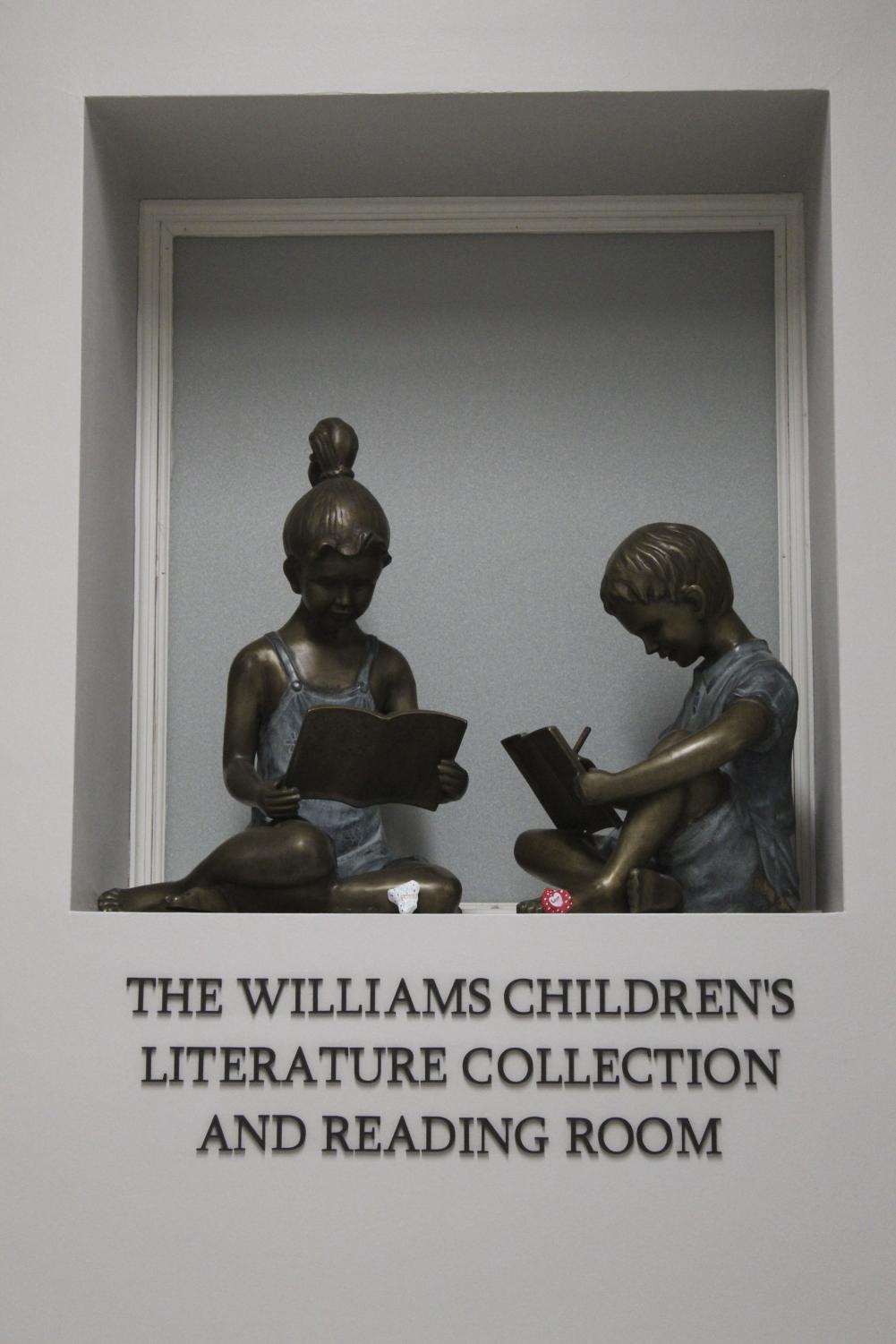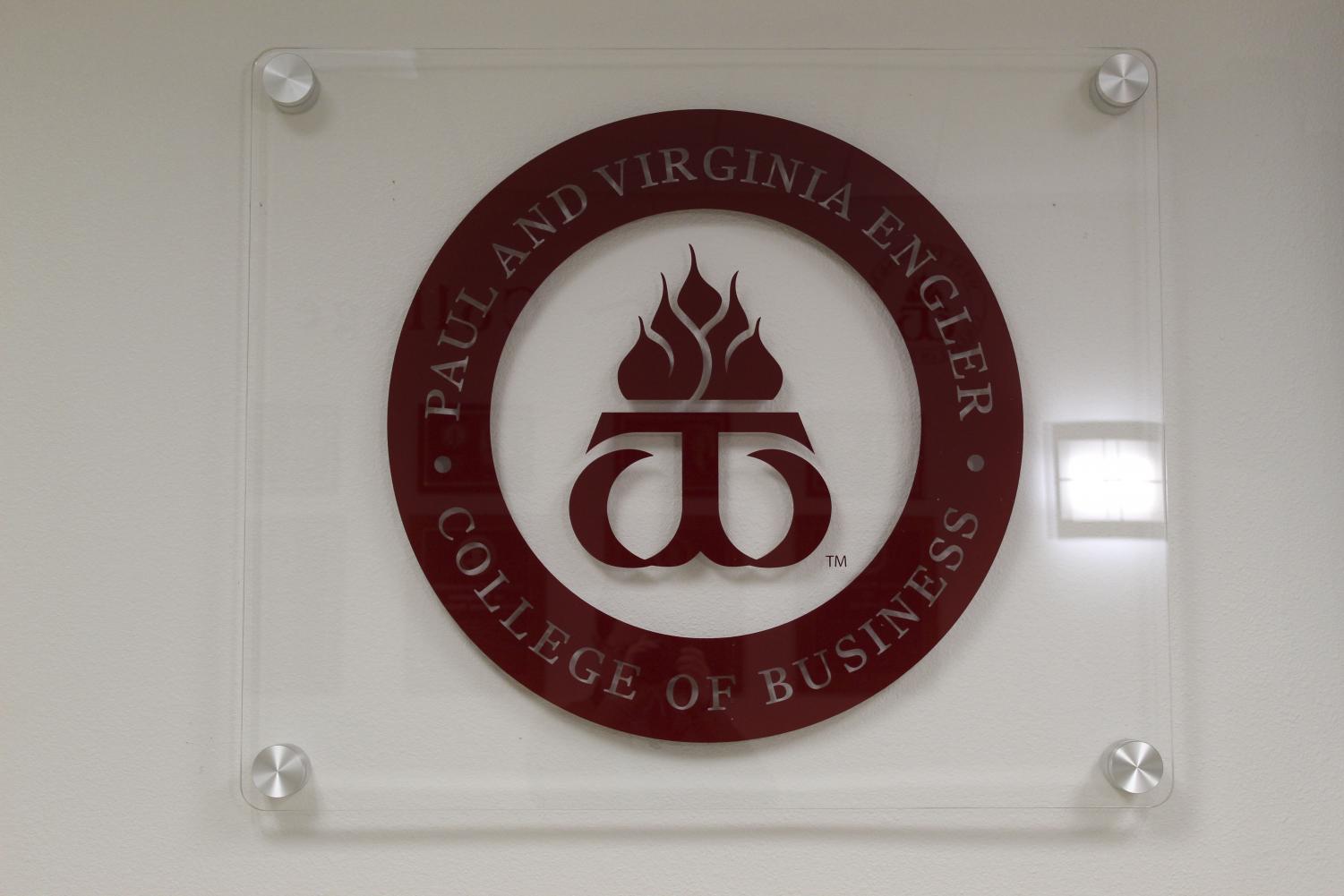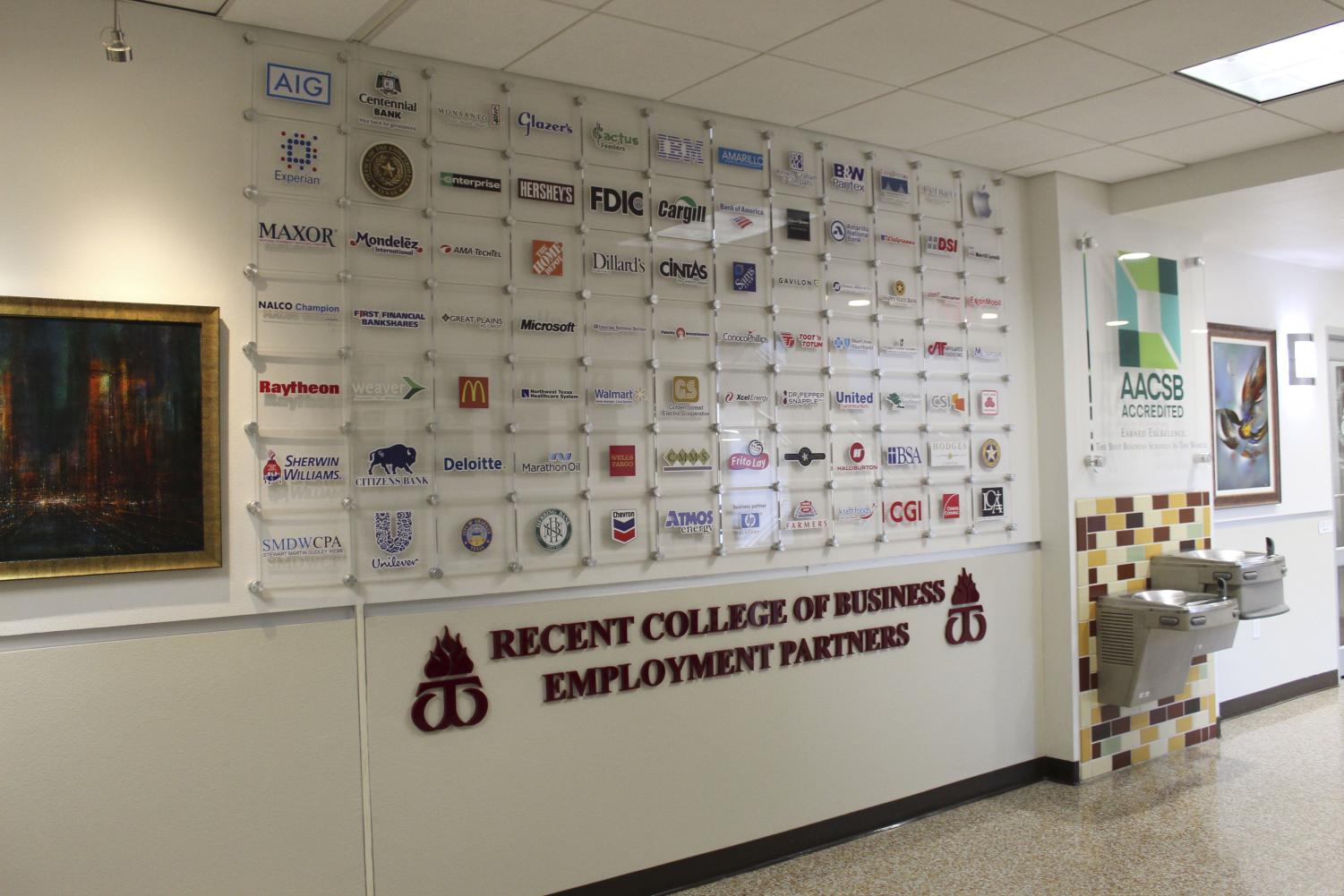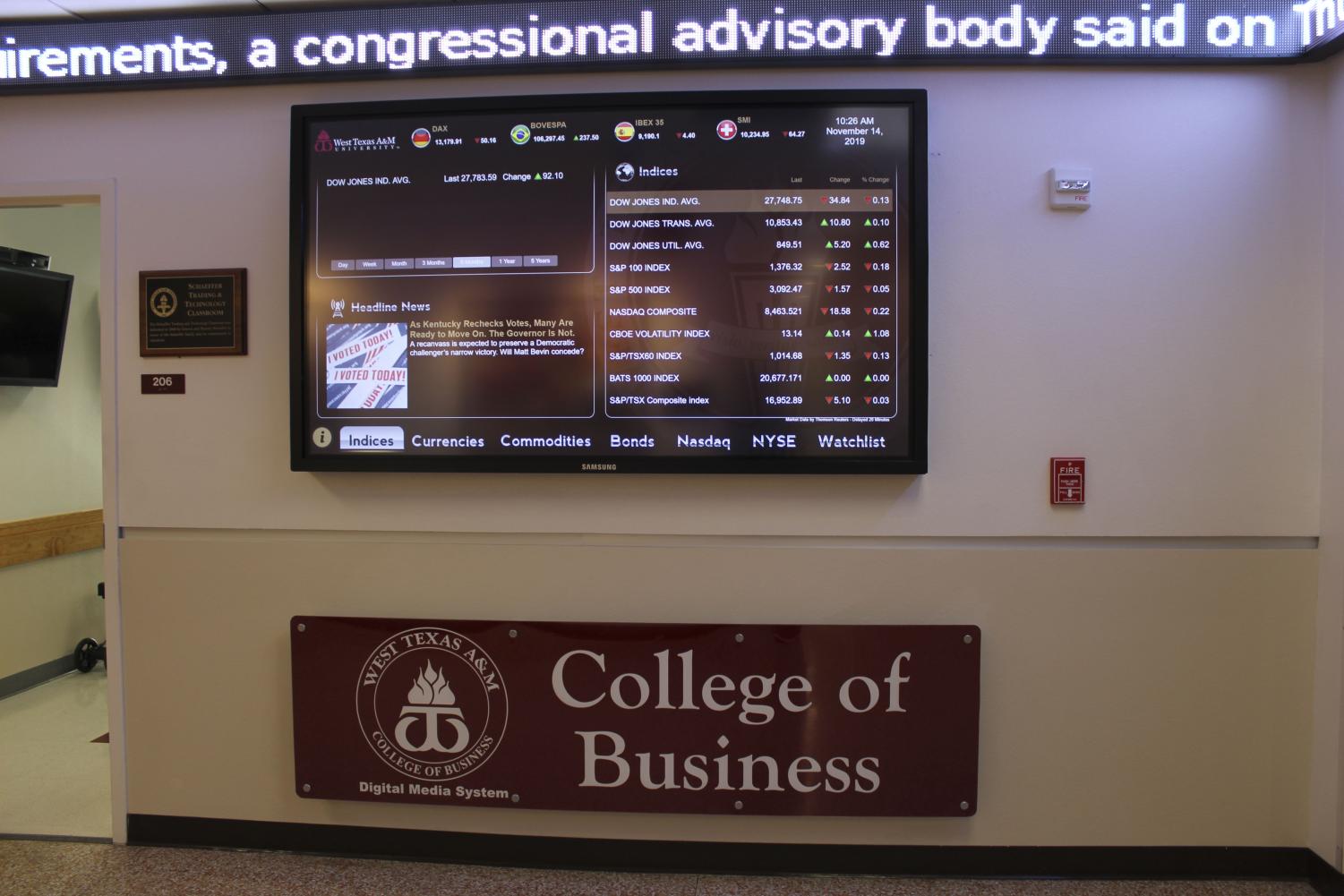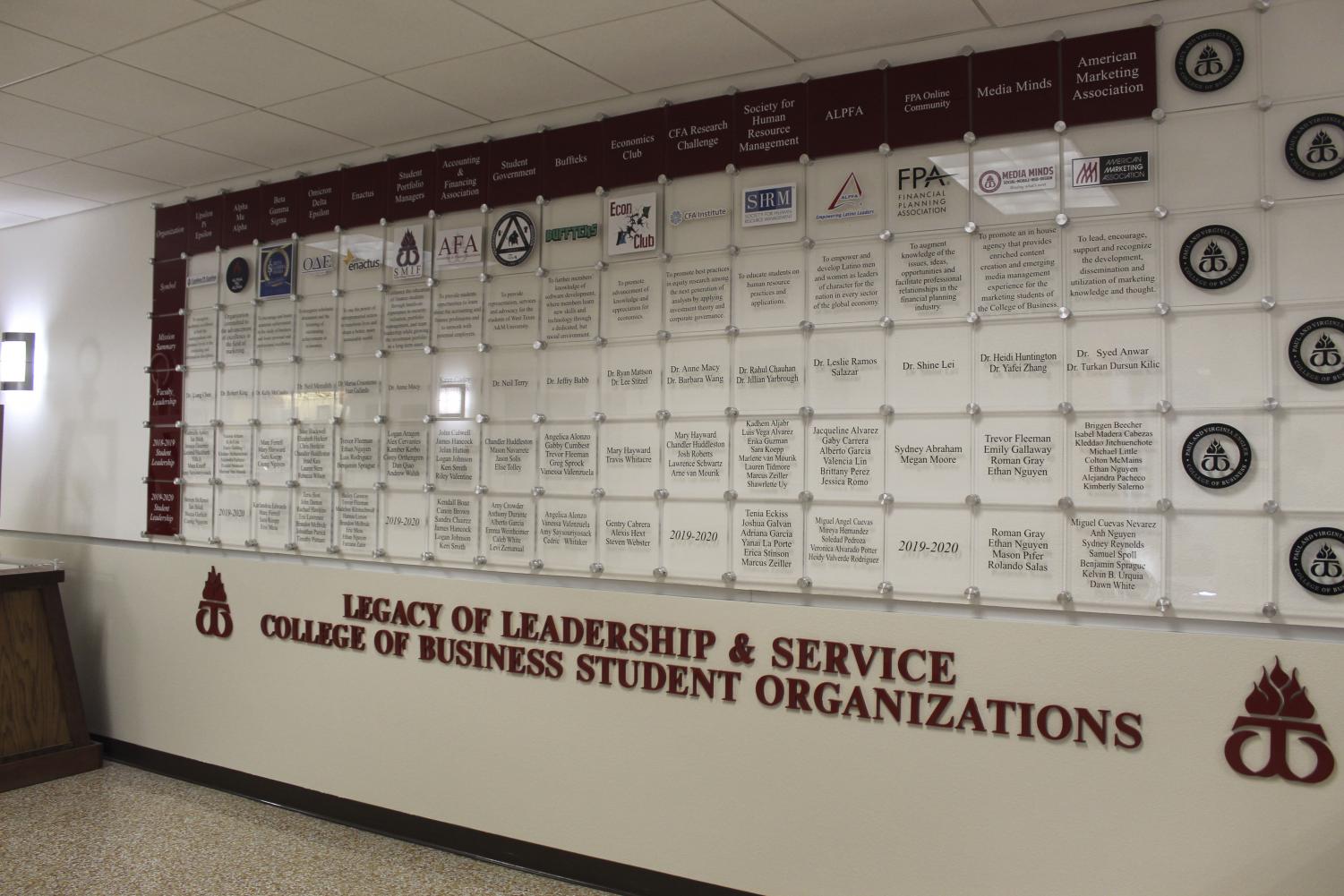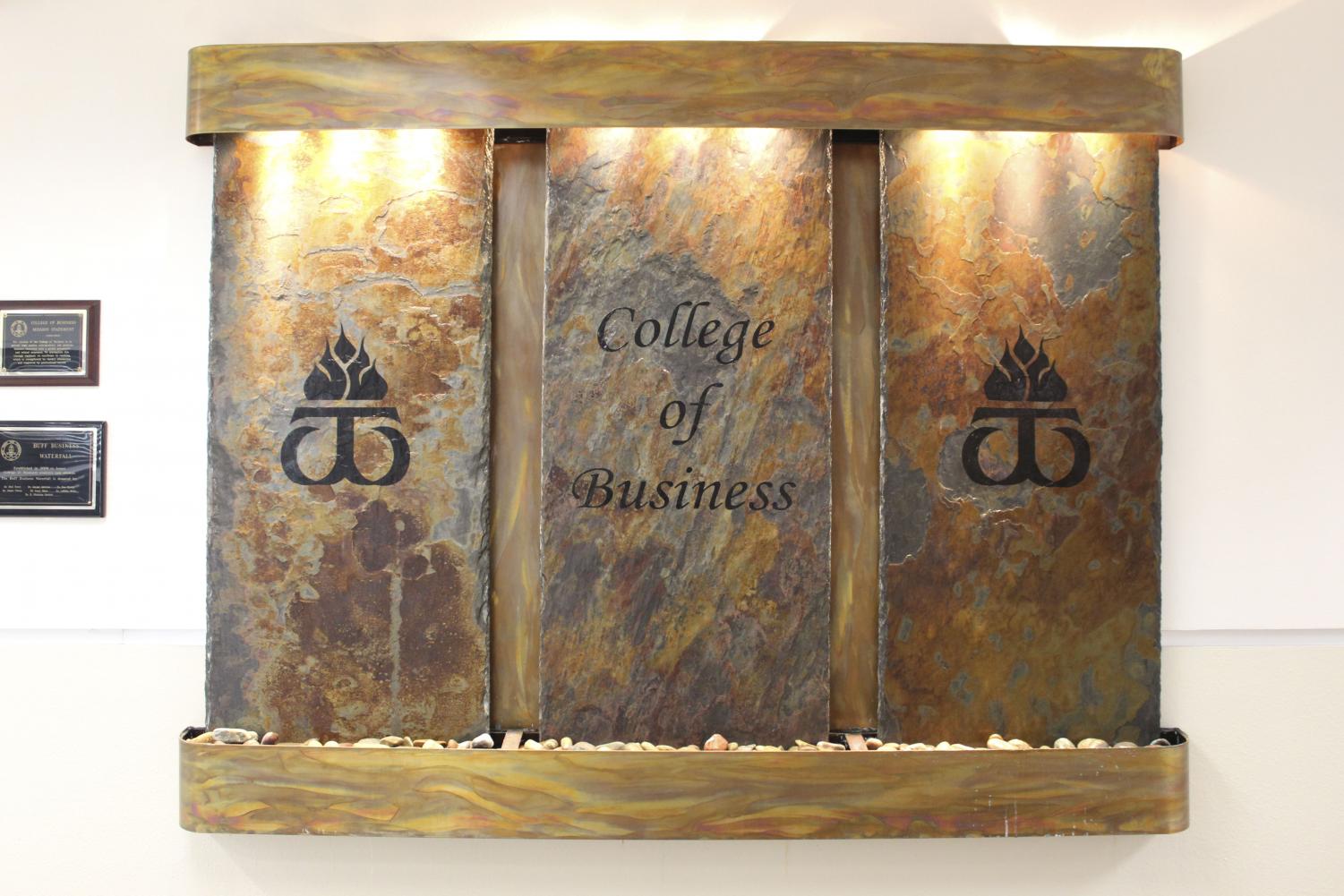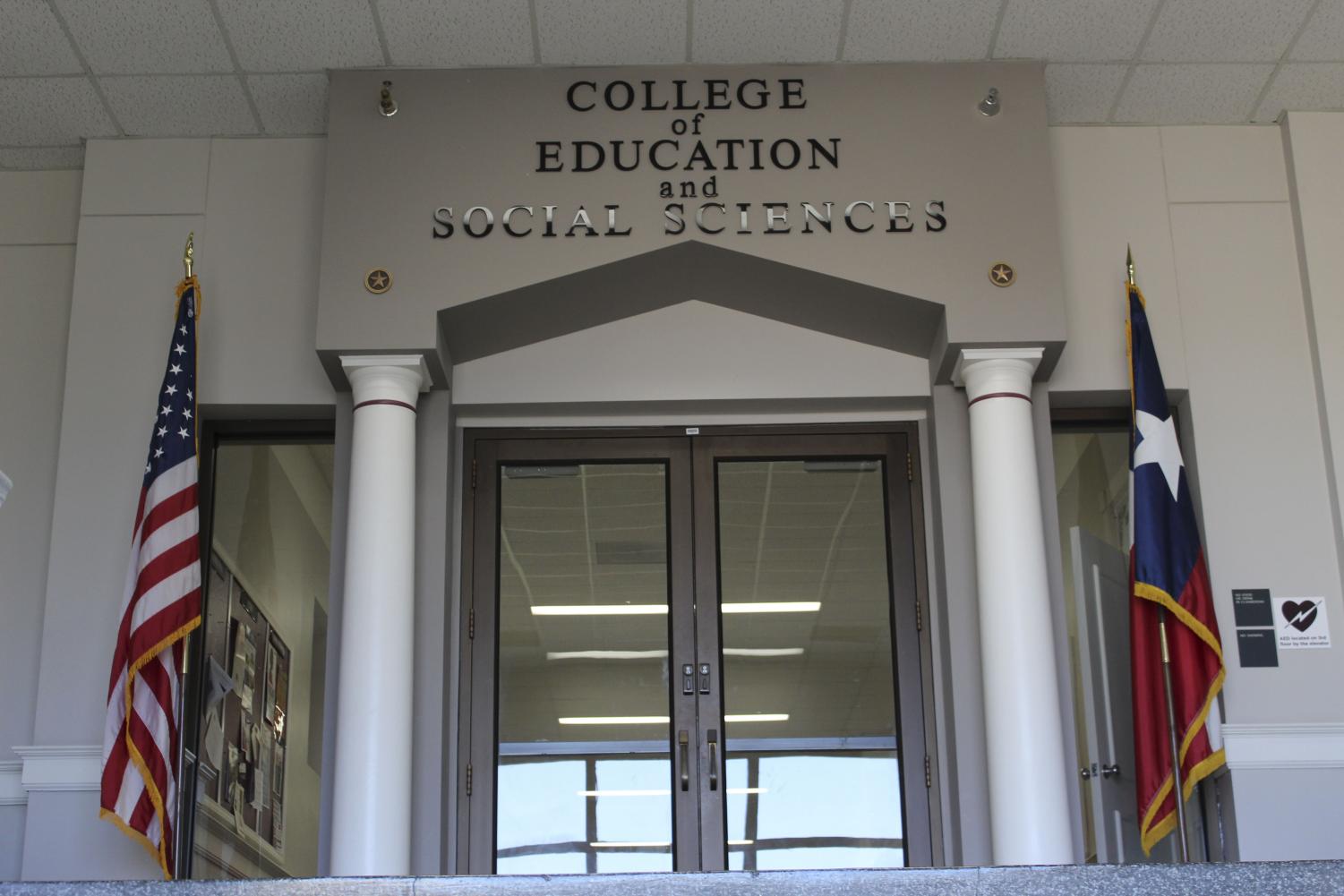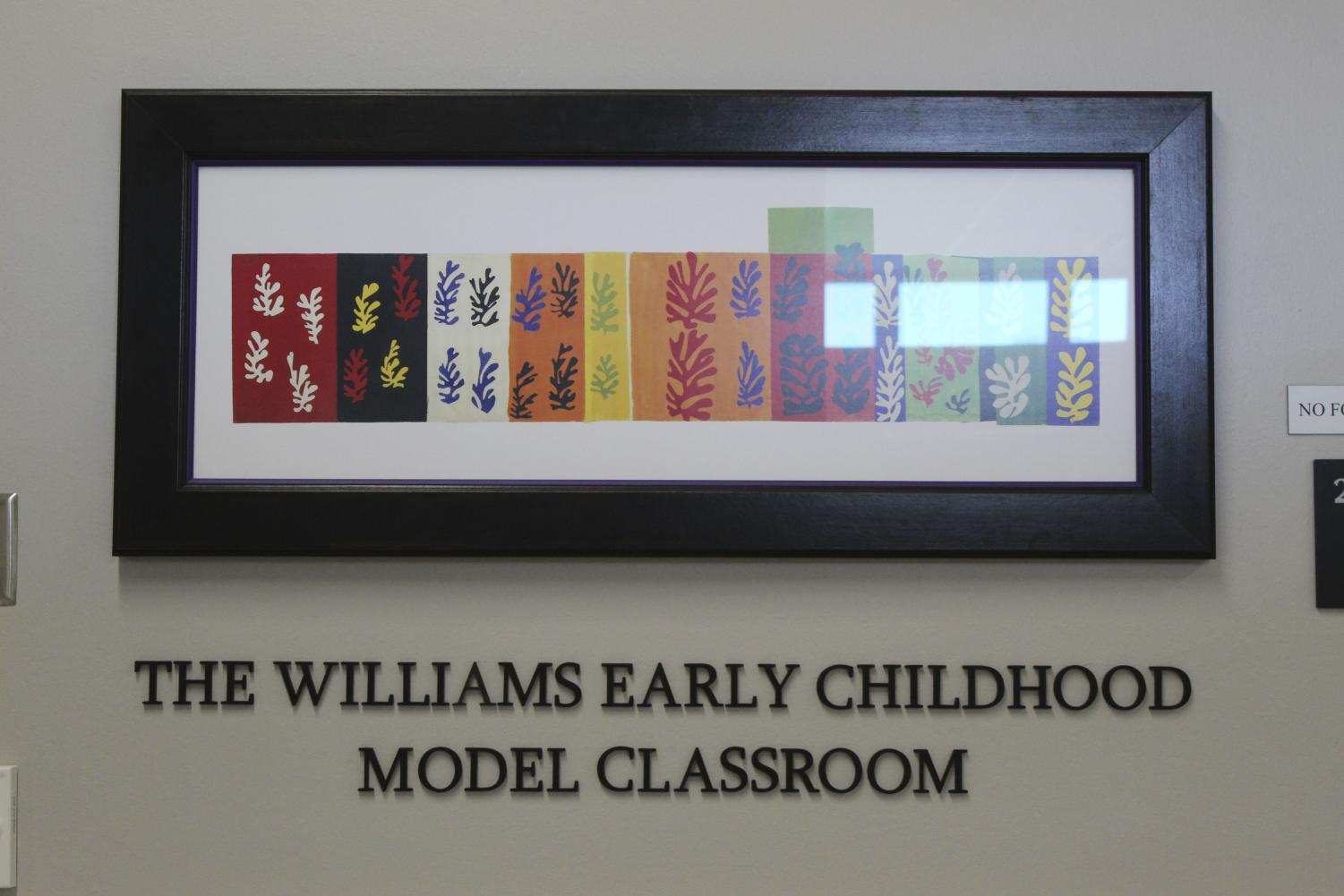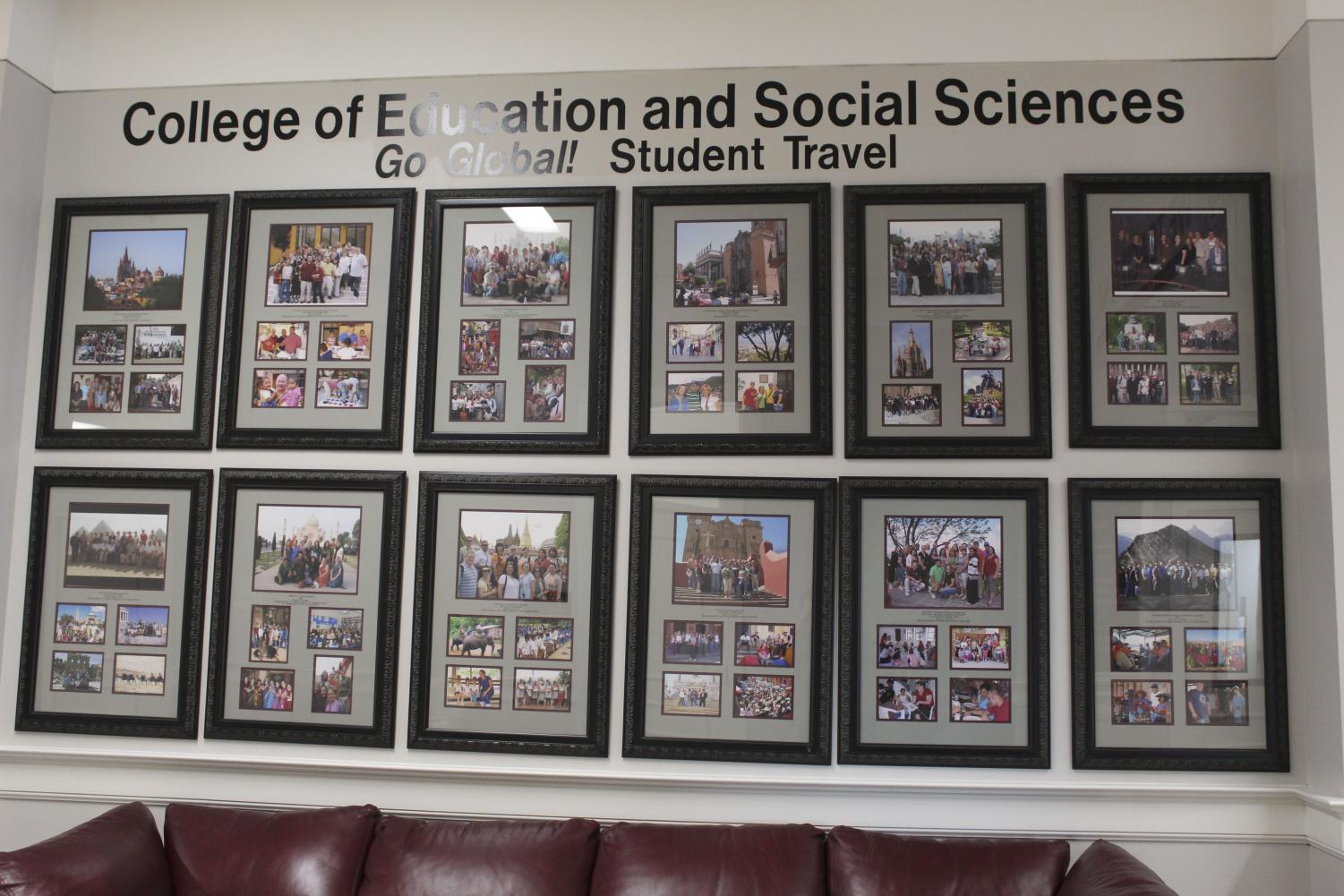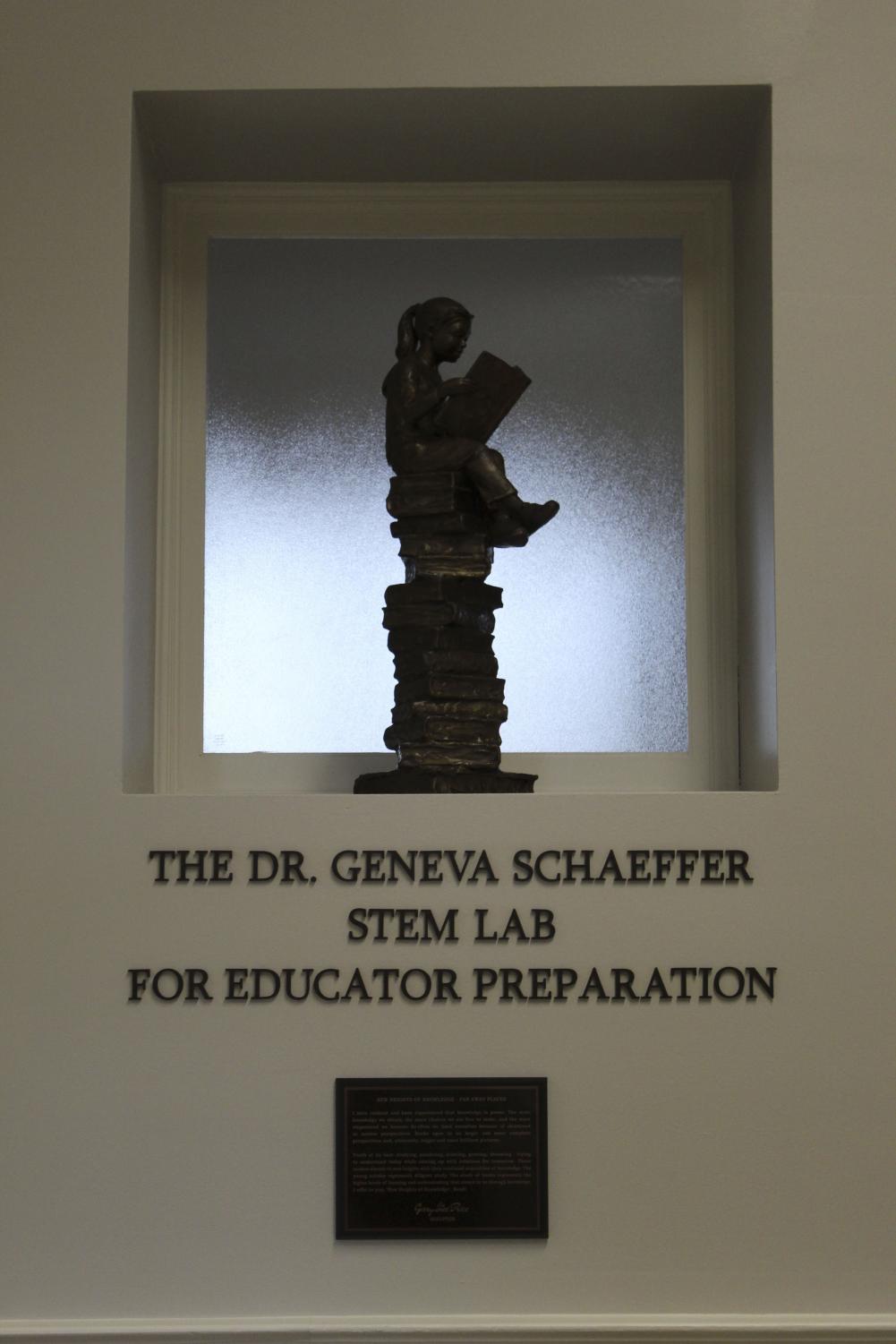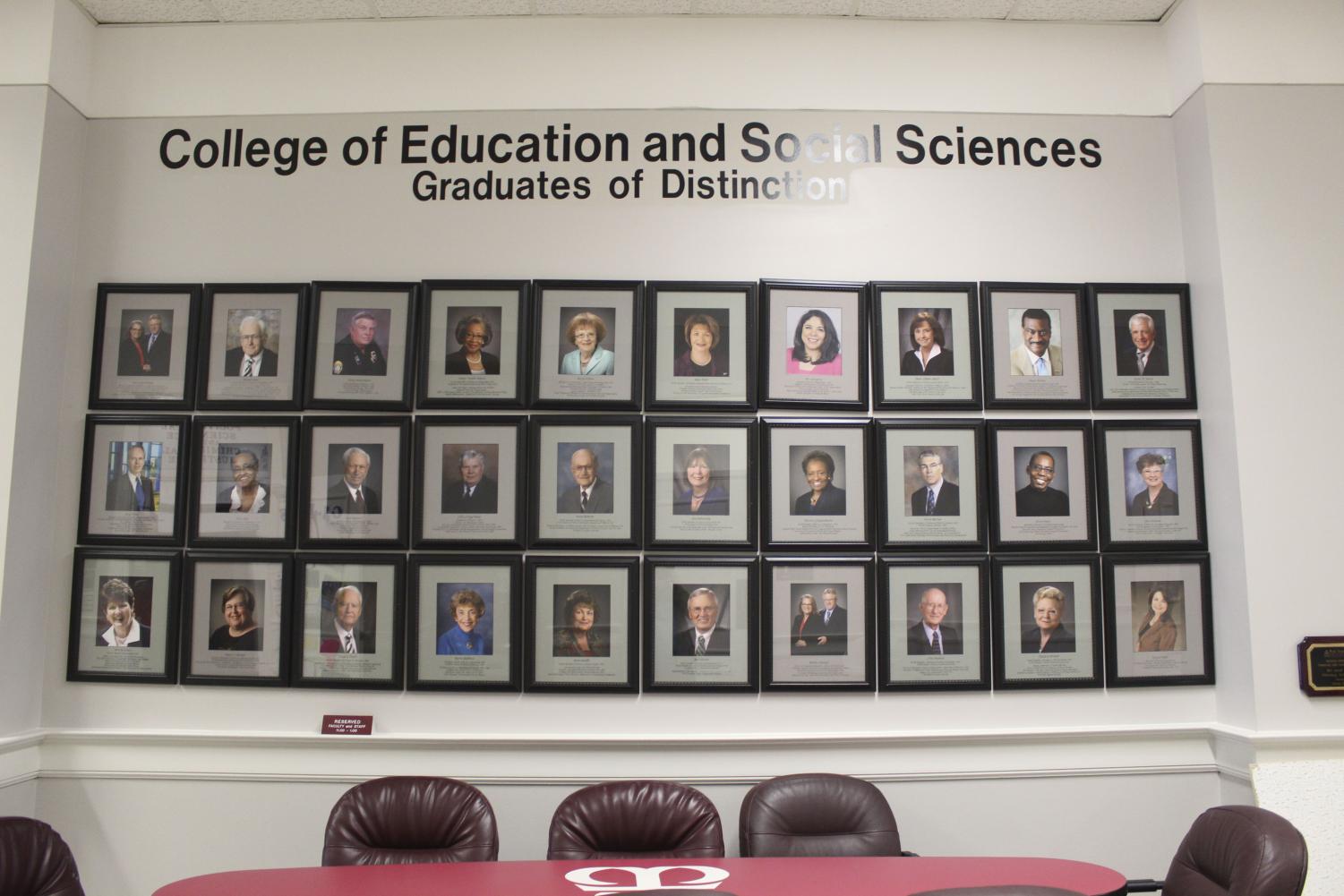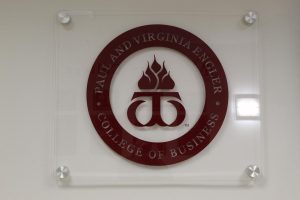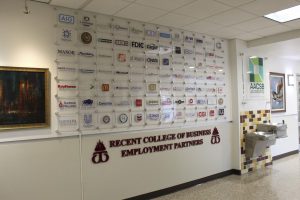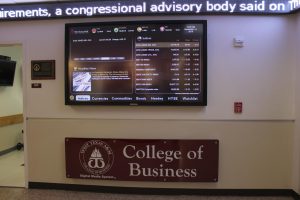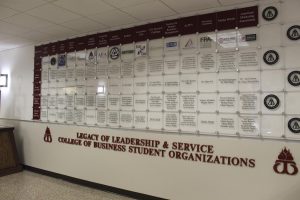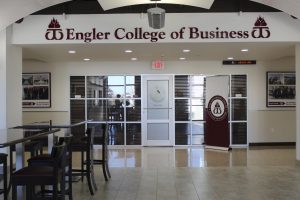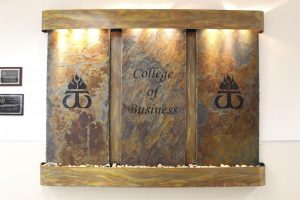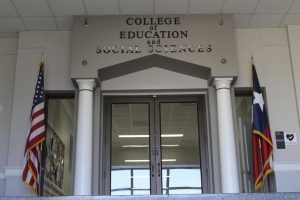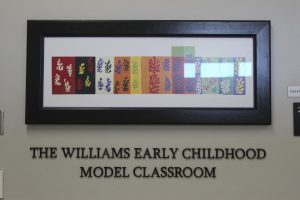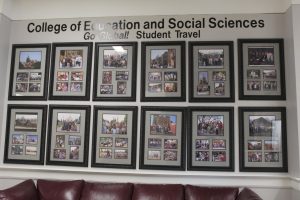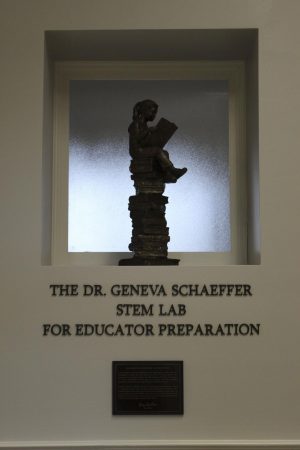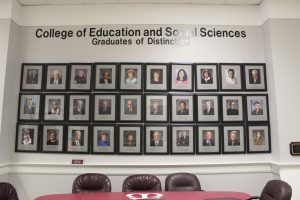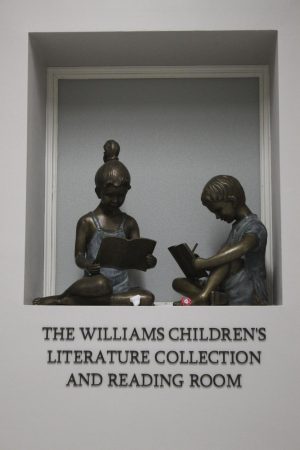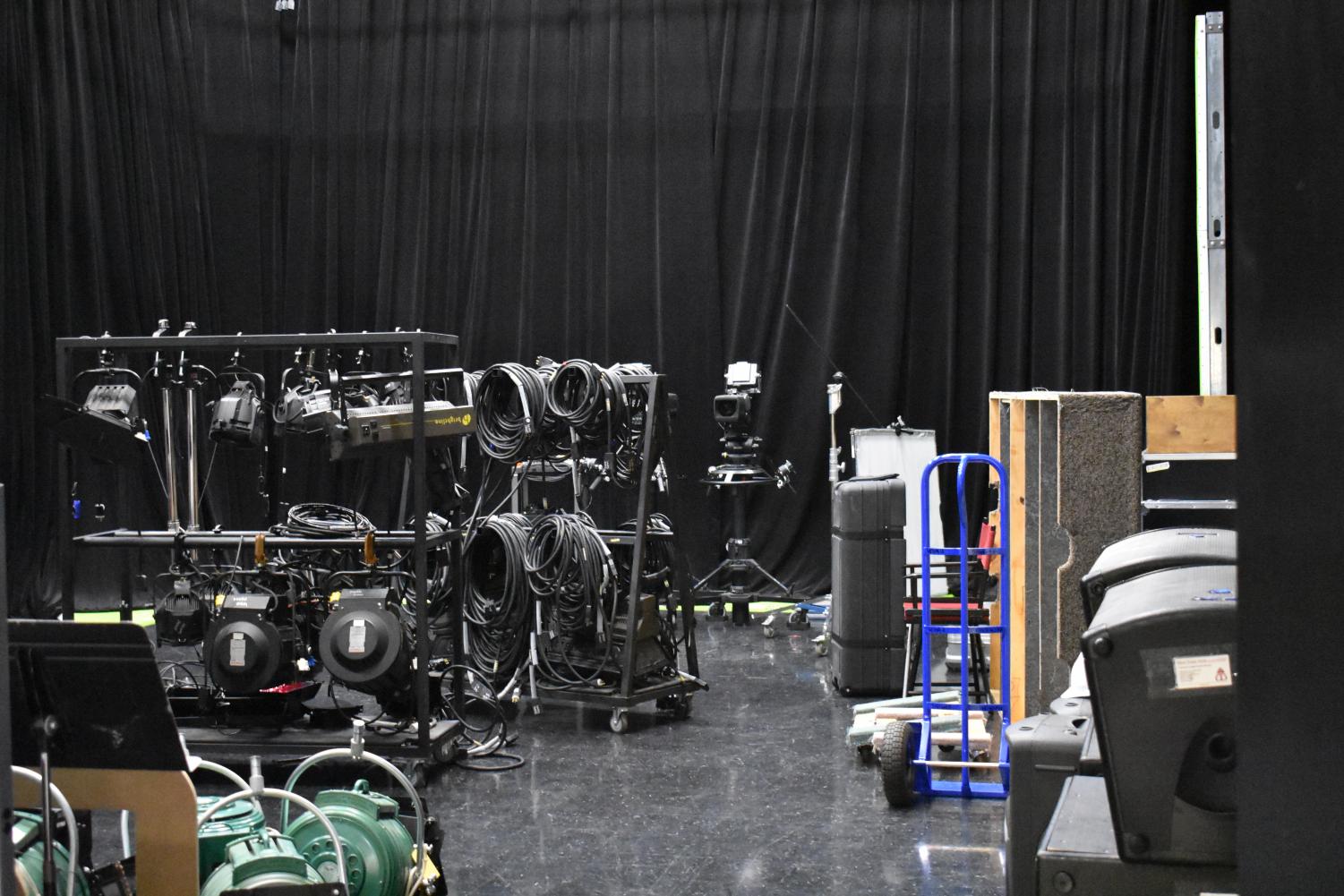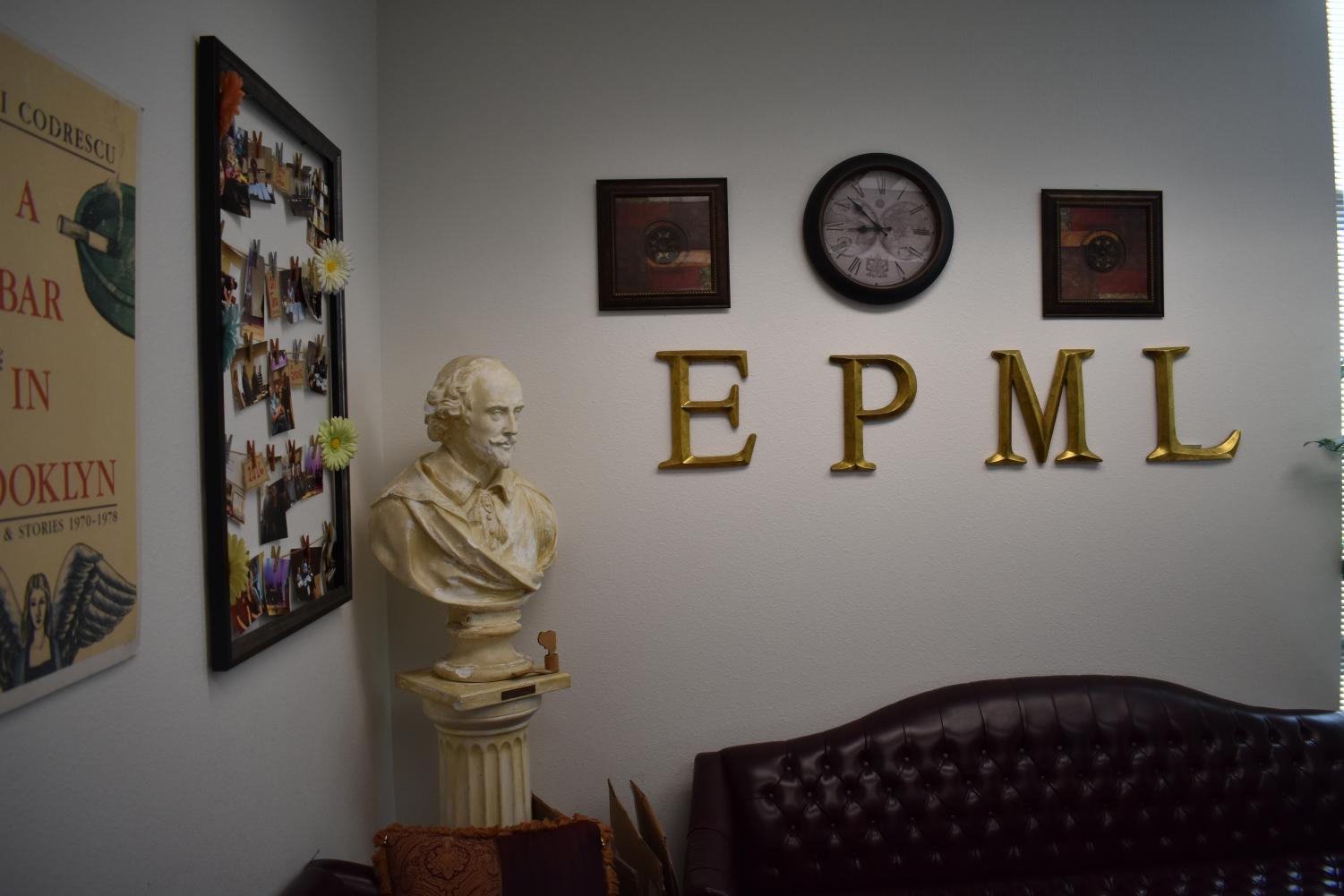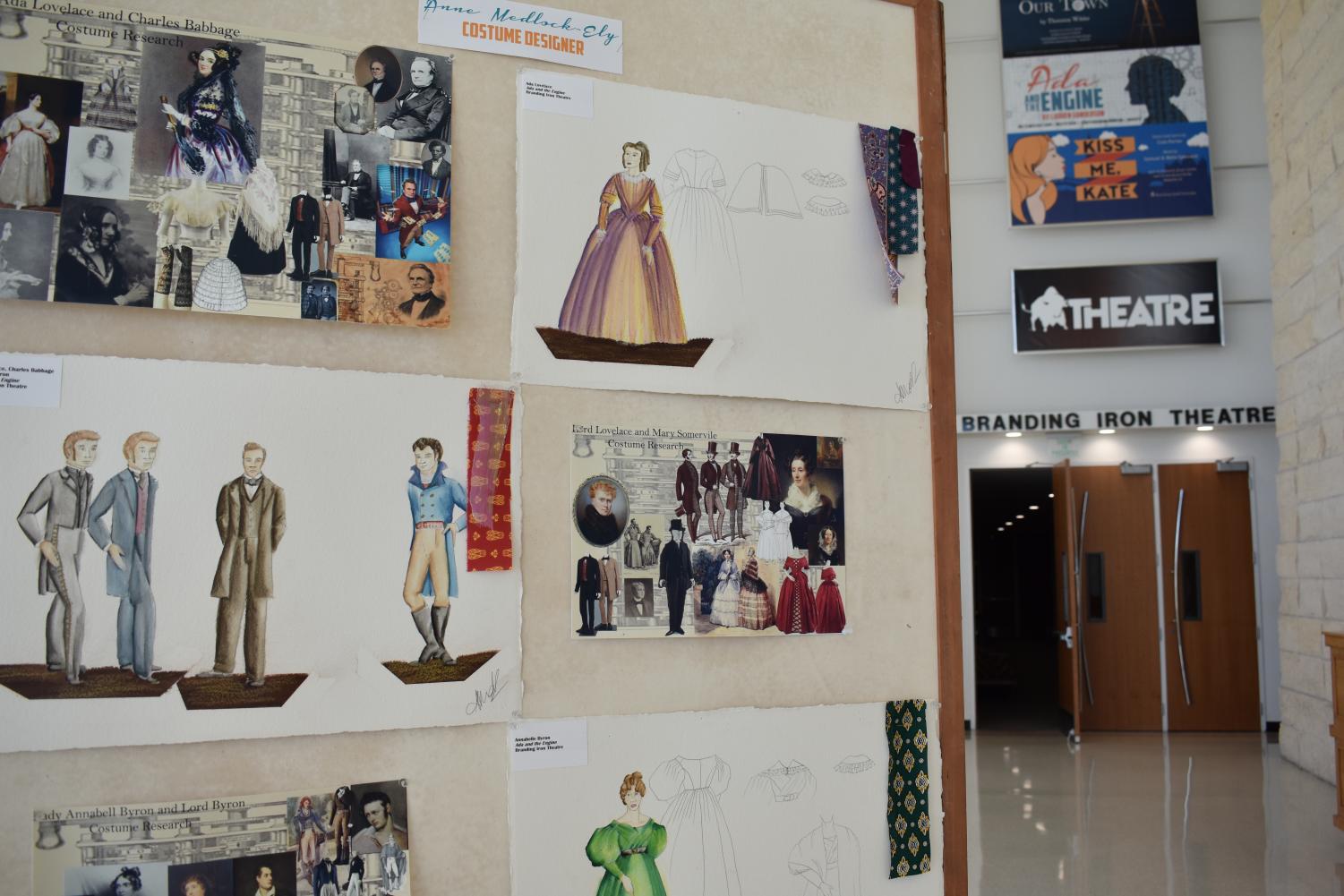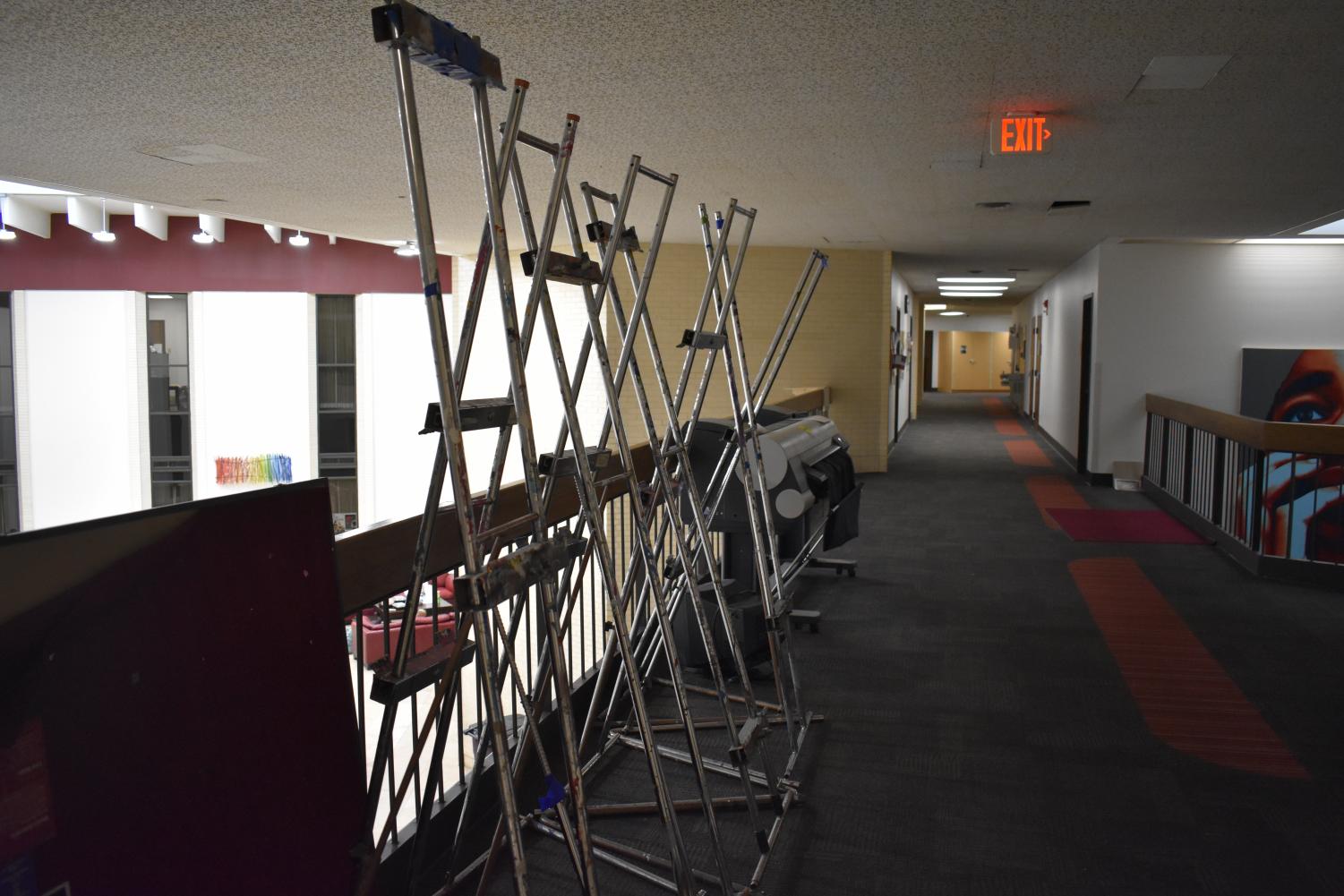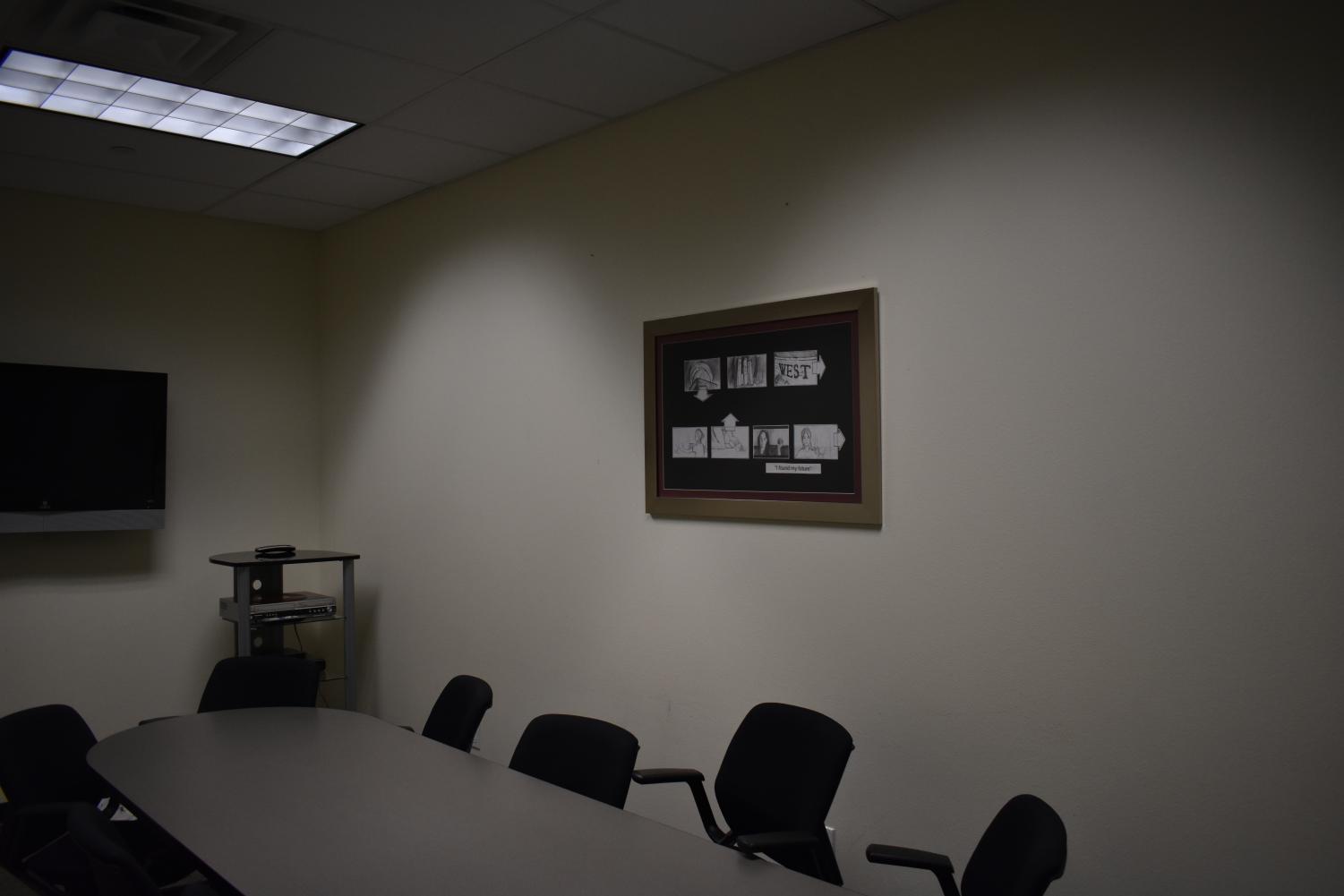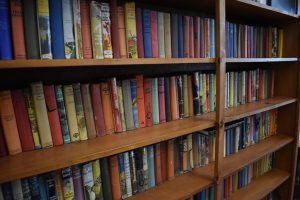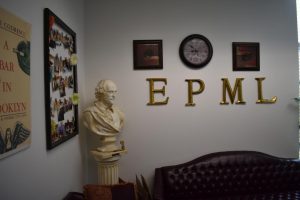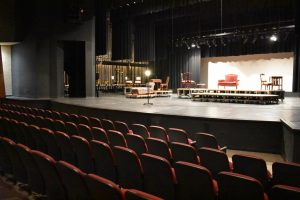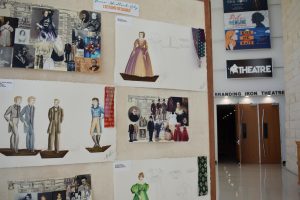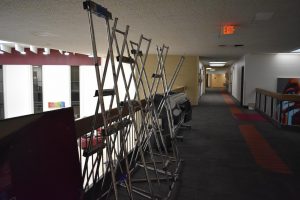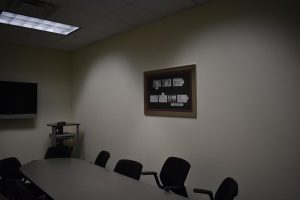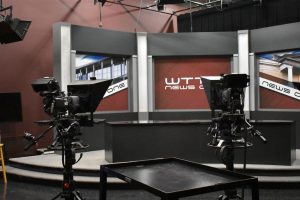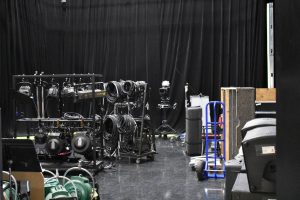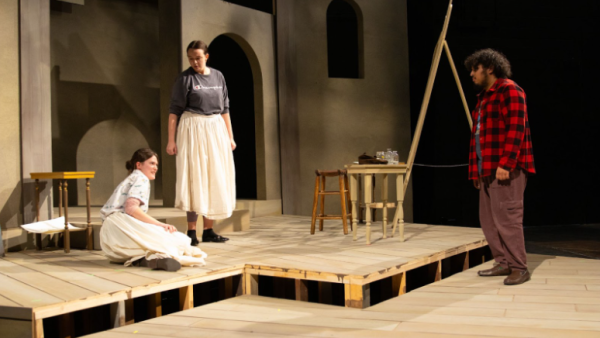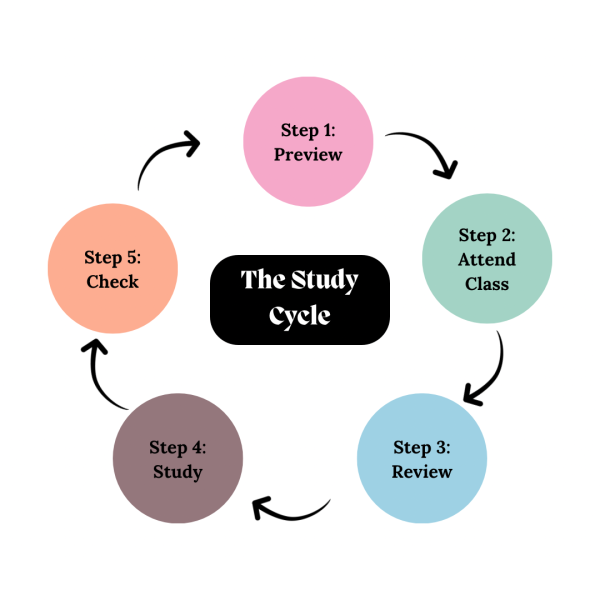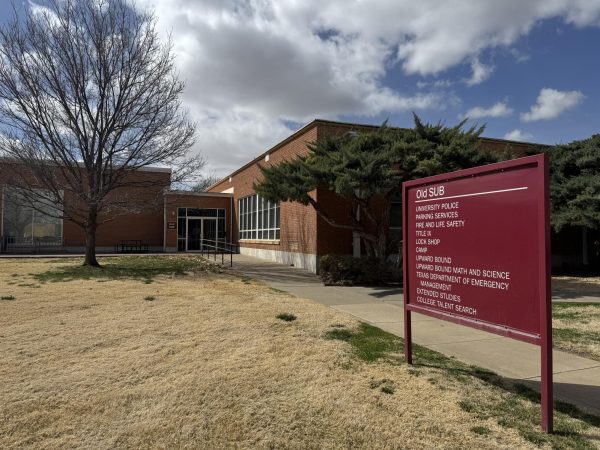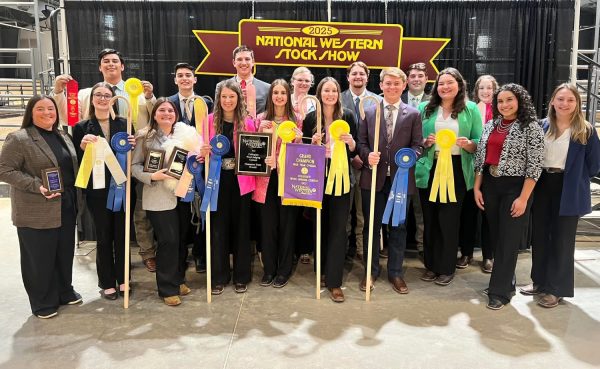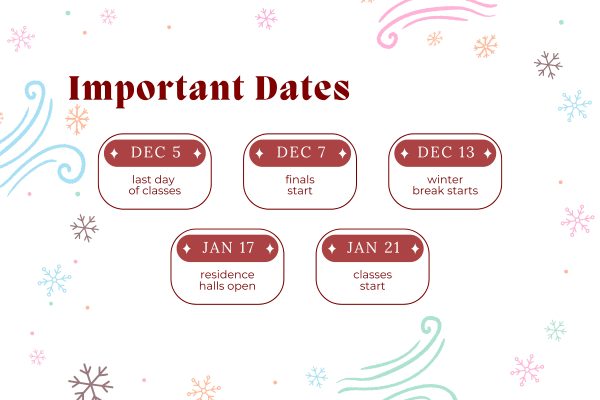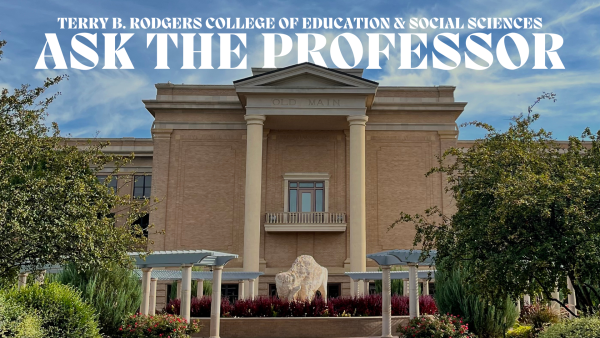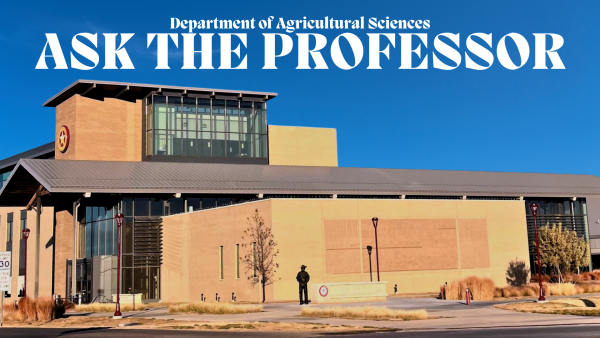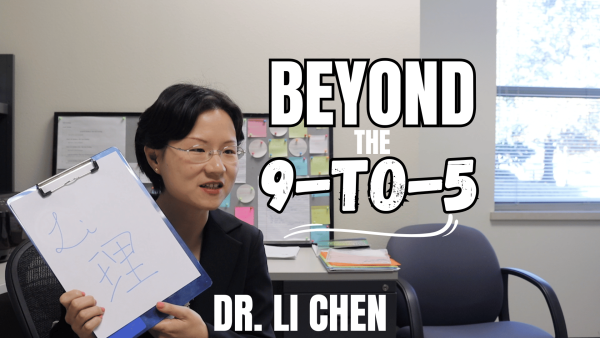-
Savannah Wesley/The Prairie News
“The College prepares professional educators who excel academically, are reflective in practice, and are committed to the intellectual empowerment of every learner in our increasingly diverse public and private school environments,” posted on the College of Education and Social Sciences webpage.
-
Savannah Wesley/The Prairie News
“The Paul and Virginia Engler College of Business is committed to teaching excellence in both undergraduate and graduate degree programs,” posted on College of Business’ webpage.
-
Savannah Wesley/The Prairie
“West Texas A&M University is accredited by the Southern Association of Colleges and Schools and the Paul and Virginia Engler College of Business is accredited by the Association to Advance Collegiate Schools of Business (AACSB),” posted on College of Business’ webpage.
-
Savannah Wesley/The Prairie News
The Paul and Virginia Engler College of Business is located on the second floor of the Jack B. Kelly Classroom Center and provides up to date information about stock levels, rates and changes.
-
Savannah Wesley/The Prairie News
” Faculty members are student oriented yet maintain high standards for classroom performance, preparing students for intelligent, active and productive participation in business and community life,” posted on College of Business’ webpage.
-
Savannah Wesley/The Prairie News
Dr. Neil Terry is the dean of the college of business and also serves as a professor of economics.
-
Savannah Wesley/The Prairie News
The college offers many graduate and undergraduate degree programs including “accounting, economics, finance, information systems, marketing, management, international business, entrepreneurship and health-care management.”
-
Savannah Wesley/The Prairie News
“The College of Education and Social Sciences is a student-centered learning community dedicated to educating tomorrow’s leaders through innovative academic and co-curricular programs,” the College of Education and Social Sciences webpage.
-
Savannah Wesley/The Prairie News
There are classrooms specific to education and social science class spread throughout Old Main with the focus being on the second and fourth floors.
-
Savannah Wesley/The Prairie News
“As a student in the College, you will have opportunities to travel internationally, participate in meaningful service-learning programs, and develop effective leadership and critical-thinking skills,” the College of Education and Social Sciences webpage.
-
Savannah Wesley/The Prairie News
The College of Education and Social Sciences is located on the fourth floor of Old Main.
-
Savannah Wesley/The Prairie News
Dr. Eddie Henderson is the dean of the College of Education and Social Sciences.
-
Savannah Wesley/The Prairie News
“The College prepares professional educators who excel academically, are reflective in practice, and are committed to the intellectual empowerment of every learner in our increasingly diverse public and private school environments,” posted on the College of Education and Social Sciences webpage.
-
Savannah Wesley/The Prairie News
“The Paul and Virginia Engler College of Business is committed to teaching excellence in both undergraduate and graduate degree programs,” posted on College of Business’ webpage.
-
Jonah Dietz/The Prairie News: The Department of Communication has “award winning student organizations (National Broadcasting Society, KWTS, Advertising and Public Relations Society, the Prairie, the Eternal Flame, WTAMU Forensics Team, Live Crew, National Student Advertising Competition Team, and the Panhandle Storytelling Guild) [that] provide multiple opportunities for student involvement,” posted on the College of Fine Arts and Humanities webpage.
-
Various and sundry Western novels found in the EPML lounge.
-
Jonah Dietz/The Prairie News: The Department of English, Philosophy and Modern Languages prides itself in “an interdisciplinary culture that combines serious, academic rigor with good-spirited fun,” posted on the College of Fine Arts and Humanities webpage. The Lounge offers students of this department to communicate with fellow students and professors in a relaxed environment.
-
Jonah Dietz/The Prairie News: The Department of Art, Theatre and Dance’s “vibrant and creative programs offer exciting opportunities for actors, art historians, visual artists, dancers, designers and theatre technicians,” posted on the College of Fine Arts and Humanities webpage.
-
Jonah Dietz/The Prairie News: The Department of Art, Theatre and Dance has degrees “available in art, art education, dance, graphic design, musical theatre, studio art, theatre education, theatre performance, and theatre design and technology,” posted on the College of Fine Arts and Humanities webpage.
-
Jonah Dietz/The Prairie News: The Department of Art, Theatre and Dance “strives to mentor the individual student in his or her artistic and academic work,” with “outstanding faculty and staff, state-of-the-art facilities, and a broad network of guest artists,” posted on the College of Fine Arts and Humanities webpage.
-
Jonah Dietz/The Prairie News: The Department of Communication offers “an academic program that emphasizes connection between students, the community, and their studies,” posted on the College of Fine Arts and Humanities webpage.
-
Jonah Dietz/The Prairie News: The Department of Communication sets itself apart “with state-of-the-art facilities provided by the Sybil B. Harrington Fine Arts Complex, [where students] learn the basics of news writing, broadcasting, public relations, corporate communication and speech performance by creating and producing award-winning projects,” posted on the College of Fine Arts and Humanities webpage.
-
Jonah Dietz/The Prairie News: The Department of Communication has “award winning student organizations (National Broadcasting Society, KWTS, Advertising and Public Relations Society, the Prairie, the Eternal Flame, WTAMU Forensics Team, Live Crew, National Student Advertising Competition Team, and the Panhandle Storytelling Guild) [that] provide multiple opportunities for student involvement,” posted on the College of Fine Arts and Humanities webpage.
-
Various and sundry Western novels found in the EPML lounge.
In 1983, developmental psychologist and Harvard professor Howard Gardner released his book “Frames of Mind: The Theory of Multiple Intelligences” in which he proposed eight different types of intelligences and strengths that an individual may have: Visual-Spatial, Linguistic-Verbal, Interpersonal, Intrapersonal, Logical-Mathematical, Musical, Bodily-Kinesthetic, and Naturalistic. Gardner’s theory has now grown to become a popular framework for developing school curriculums and lesson plans.
There is probably no better place to explore the expression of the multiple intelligences than at a university, particularly a university as diverse as West Texas A&M. With six colleges within the university, each intelligence has its opportunity to shine and learn where they fit best.
In the Paul Engler College of Agriculture and Natural Sciences, logic might dictate that Naturalistic and Logical-Mathematical intelligences would be the dominant strengths that students express. Senior agricultural education major Sloan Sanders proves that thought wrong. Sanders believes that her Linguistic-Verbal learning style has been her biggest asset in her college career.
“I feel that my learning style has been extremely beneficial in college,” Sanders said. Her major and career path both require her to be extroverted and communicative, and she added that her natural inclination towards being a verbal learner has helped her both with networking and developing her skills as an educator.
Sanders continued to describe other learning styles useful in her career field, including Visual-Spatial and Bodily-Kinesthetic. “Those are the most directed [towards agriculture],” Sanders said, citing subjects such as agricultural mechanics and animal science that are very hands-on with direct, real-life consequences and require in-depth spacial awareness and excellent hand-eye coordination.
Dr. Lance Baker agreed with Sanders about the benefits of the Linguistic-Verbal intelligence in agriculture and natural sciences. Baker stated that his proclivity towards taking in information through reading and writing was beneficial during his entire university career, particularly while pursuing his master’s and doctoral degrees at Oklahoma State University.
Baker added that despite not being familiar with Gardner’s theory, he understood the value of teaching to students with different learning styles in his wide range of classes.
“I try to use different methodologies that apply to various learning styles when appropriate,” Baker said. This is apparent in his lesson topics which include diet formulation, equine anatomy and physiology, and agricultural tax laws.
Throughout her time in university, Shayna Chewning has become very familiar with how her Logical-Mathematical intelligence works in her favor. After receiving her bachelor’s degree in equine science from the University of Florida, Chewning came to WTAMU to continue her education, first receiving her master’s degree in animal science. She currently is studying agriculture at the doctoral level.
“I have always done well in science courses,” Chewning said, “and that has driven me to pursue graduate degrees in animal science and agriculture.” She said that she plans to continue directing her career towards research and science and attributed that choice to her learning style. “It has been instrumental in my life choices and is extremely beneficial for the path I’ve chosen,” Chewning added.
Chewning has also developed an understanding of the difficulties posed by being a fixedly Logical-Mathematical learner. “As I’ve grown older, I’ve noticed it’s become more and more difficult for me to focus on reading and writing,” Chewning said. “I hypothesize that it’s because I’ve spent many years training myself to think more logically and numerically, and have now decreased my desire to do those things.”
She acknowledged the importance of Linguistic-Verbal learning and intelligence in graduate work and scientific research, and admits that utilizing those talents have been the hardest part of her graduate studies.
Adding that she learns best in a hands-on environment, Chewning stated that she believes that almost all strengths have their place in scientific studies. “Naturalist strengths are important to detect connections in science,” Chewning said. “I’m sure I have used all [intelligences] at some point… I think it’s important to incorporate as many styles as possible to accommodate as many learning styles as you can in the classroom,” she added, saying that while it presents a unique challenge to educators, it is not impossible. “Should I pursue a career in academia, my goal will be to serve each student to the best of my ability.”
The theory of multiple intelligences has proven itself to be a useful and credible tool for educators and students alike. Much of what Gardner’s theory suggests is intrinsic knowledge for many people, and provides individuals a label to gain a better understanding of themselves and to easily explain themselves to others.
If anything, the multiple intelligence theory can help break down stereotypes; for example, that only English or communication majors are Linguistic-Verbal or all agriculture students are Naturalistic learners. All intelligences have a place in all fields of study, and increasing understanding of learning styles will benefit all those involved in education.



